Tuvalu Tau Gana Ko Tou Lagaifakalaga
Additional material by Talei Masters, Archives New Zealand and Ane Teilauea, Director, Tuvalu National Library and Archives.
Fakatalofa atu! September 29–October 6 is the inaugural Tuvalu Language Week in New Zealand. The theme for the week is "Tuvalu tau gana ko tou lagaifakalaga – Tuvalu, your language keeps your culture and identity afloat".
If we expand the metaphor that language keeps your culture and identity afloat; then archives, collections, and relationships with communities are the canoe on which that culture and identity can not just float, but sail confidently forward to the future.
Where is Tuvalu?
Tuvalu was first populated during the great canoeing migrations around 3000 years ago, by people travelling primarily from Samoa and Tonga. Eight of the nine islands were inhabited – the name Tuvalu means "eight standing together".
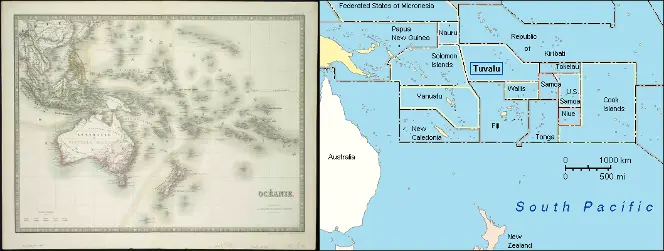
Oceanie, 1856, by J Andriveau-Goujon. Ref: MapColl-910a/1856/Acc.32479; Map of Tuvalu in the Pacific, from here.
Approximately 11,000 people live in Tuvalu. It is the 4th smallest country in the world at 26 square kilometres, with a highest point above sea level of 4.6 meters. According to the 2013 New Zealand census, approximately 3,500 Tuvaluans live in New Zealand, making it our seventh largest Pacific population.
Connecting with Tuvalu
In 2013 Talei Masters of Archives NZ and I spent 7 days in Tuvalu’s capital, Funafuti, working with the Tuvalu National Library and Archives (TNLA). The purpose of the skills exchange was to support TNLA’s work to ensure Tuvalu creates and maintains good records and archival collections. The work was funded through the Fund for the International Development of Archives, which is managed by the International Council on Archives. There were 3 days of workshops and 2 days working closely with TNLA on their systems and policies.
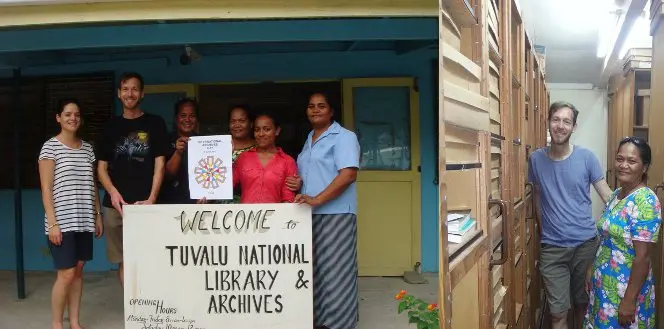
Mark and Talei with the staff of Tuvalu National Library and Archives; Mark and Mila Tulimanu in the stacks of the TNLA.
The National Library of New Zealand and Archives New Zealand have strong links with our Pacific Island colleagues. Archives NZ holds the position of Secretary General of the Pacific Branch of the International Council on Archives (PARBICA), the professional community for Pacific archivists.
The National Library of New Zealand has a significant collection of photographs, publications, ephemera, websites and other material relating to the history of the Pacific Islands, stretching back to very early contact with European explorers and forms a critical record of Pacific culture and identity. We have less Tuvaluan material that we’d like, so my photos from this trip – including those in this post – are currently going through the donation process.
The cultural boundaries between Pacific countries, including New Zealand are porous, and so too is the documentary and oral heritage that helps the culture maintain itself through time. Both the National Library and Archives NZ hope to continue to build and maintain warm and mutually beneficial relationships with our Pacific colleagues and with Pasifika communities in New Zealand to help keep the cultural canoe afloat.
Building the canoe in Tuvalu
Good archives and memory systems start with the creation and management of good records. Talei, Ane Teilauea (Director, TNLA) and I took workshops on how to manage records and archives in the Tuvaluan context. The main resource for the workshops was the PARBICA Recordkeeping for Governance Toolkit. The toolkit was developed by Pacific, New Zealand and Australian archives specialists specifically to support Pacific contexts. If you want to know more, it’s available and free to use online.
The workshop was attended by 25 participants from 16 different government ministries, including representatives from three of Tuvalu’s remote outer islands.
During the workshops we donned the traditional headwear of Tuvalu to celebrate International Archives Day. Tuvaluans often wear a floral garland for formal occasions.
In Tuvaluan, there are two dialects to describe the garland; "Fau" is used by three of Tuvalu’s atolls, while "Fou" is used by 4 others. On Nui Atoll, the people use the Kiribati language, so this island they called the head gear "Te Mae".
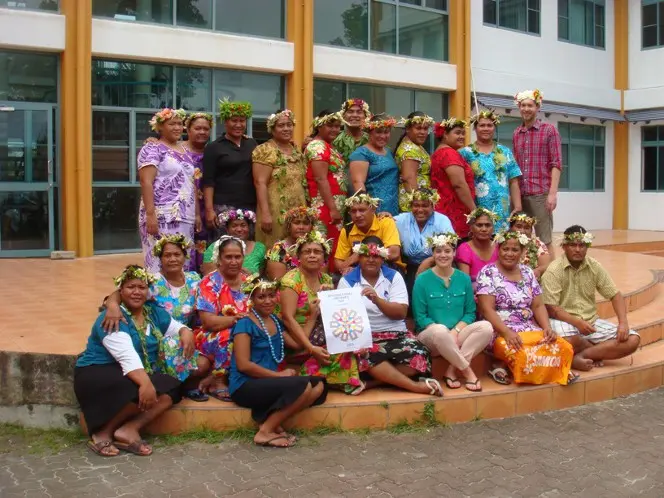
Workshop participants with traditional headwear on International Archives Day, Tuvalu, June 2013.
Talei and I also worked closely with TNLA to write two important new government policies. The Tuvalu national recordkeeping policy outlines responsibilities for creating, maintaining and disposing of government records. The TNLA access policy and agreement forms outline the principles for who can access what collections, under certain circumstances.
The runway and contemporary culture
One of the interesting aspects of Tuvaluan culture and life that surprised us was the role that the airfield runway on Funafuti, built by Americans during WWII, played in Tuvaluan culture and life. The runway is easily the largest open space on a very small atoll that ranges from 20 to 400 metres wide. There are only two flights per week to Tuvalu, so between flights this space is where most recreational activity takes place.
After work and weekend football was popular, as were dancing, playing, exercising and practicing for events. On hot, sticky tropical nights, many families sleep on the runway to take advantage of the cool Pacific breeze.
I’ll leave you with some of my photos of life on the runway, soon to be part of the Turnbull’s Pacific collections.
Fakafetai lasi
Mark, Talei, and Ane
Children practicing
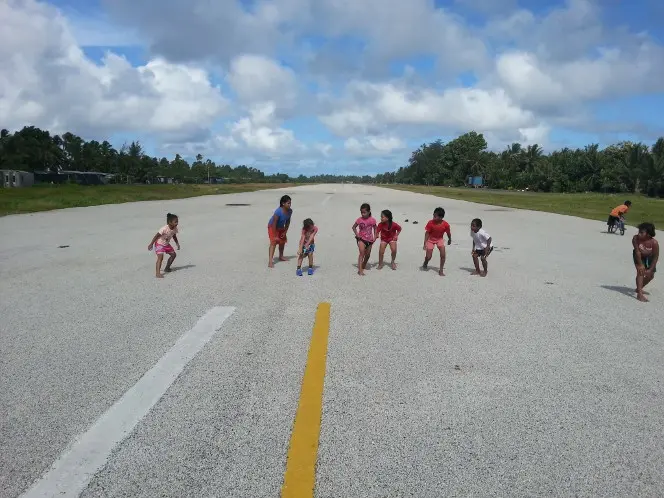
Children practicing their sprinting on the runway before the athletic events for the Queen’s Birthday celebrations, Funafuti, Tuvalu, June 2013. Photo by Mark Crookston.
Sprinting on Queen's Birthday
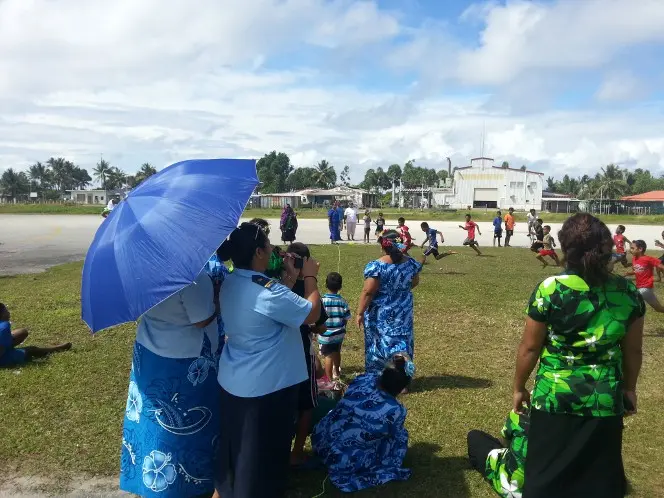
The finish line for the sprint events for the Queen’s Birthday celebrations. Photo by Mark Crookston.
Playing on the runway
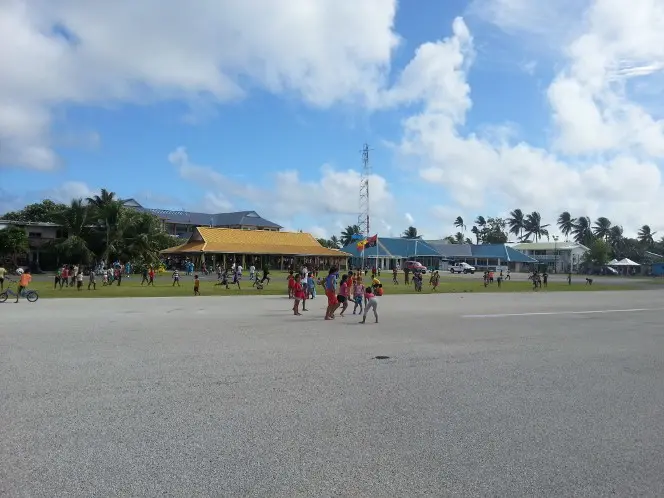
Playing on the runway. Photo by Mark Crookston.
After work football
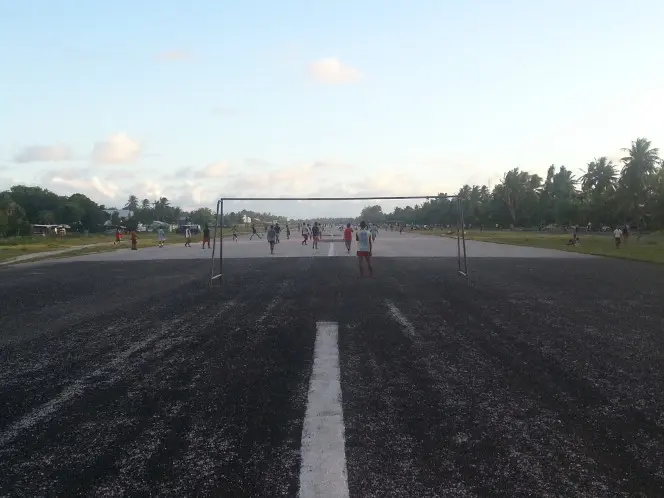
After work football on the runway. Photo by Mark Crookston.
im from tuvalu and if you want info. contact me @noahvilipetaia on instagram or noah viliamu on facebook